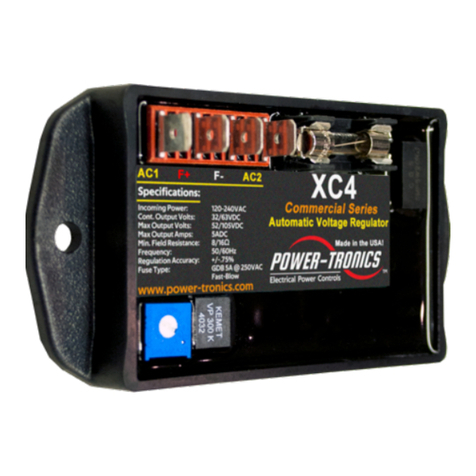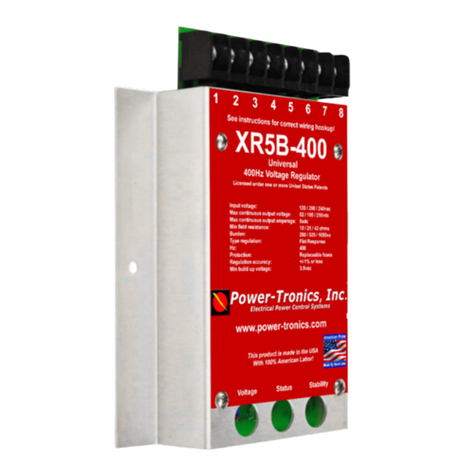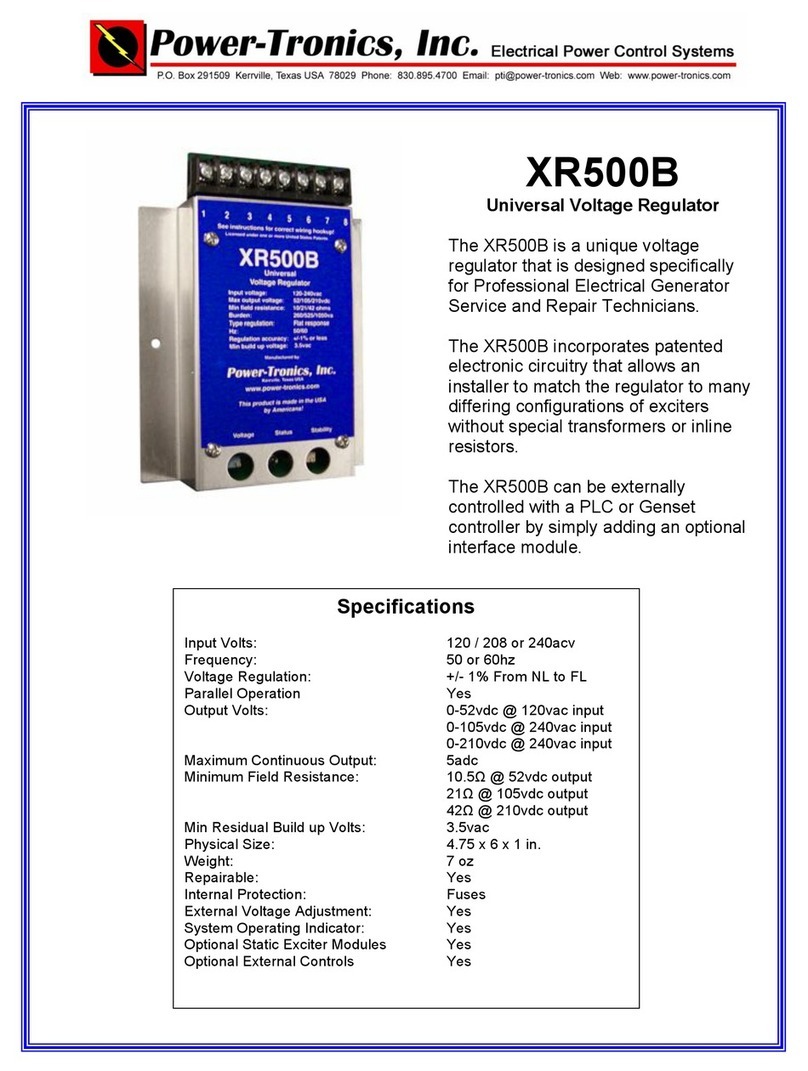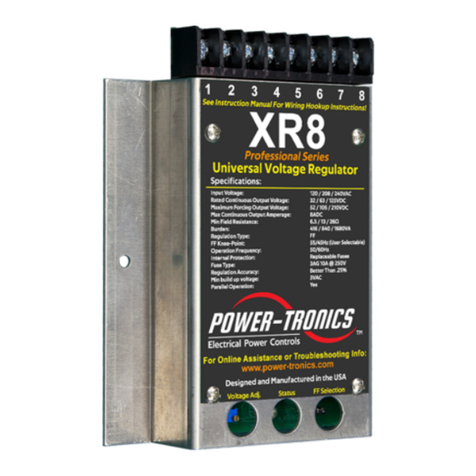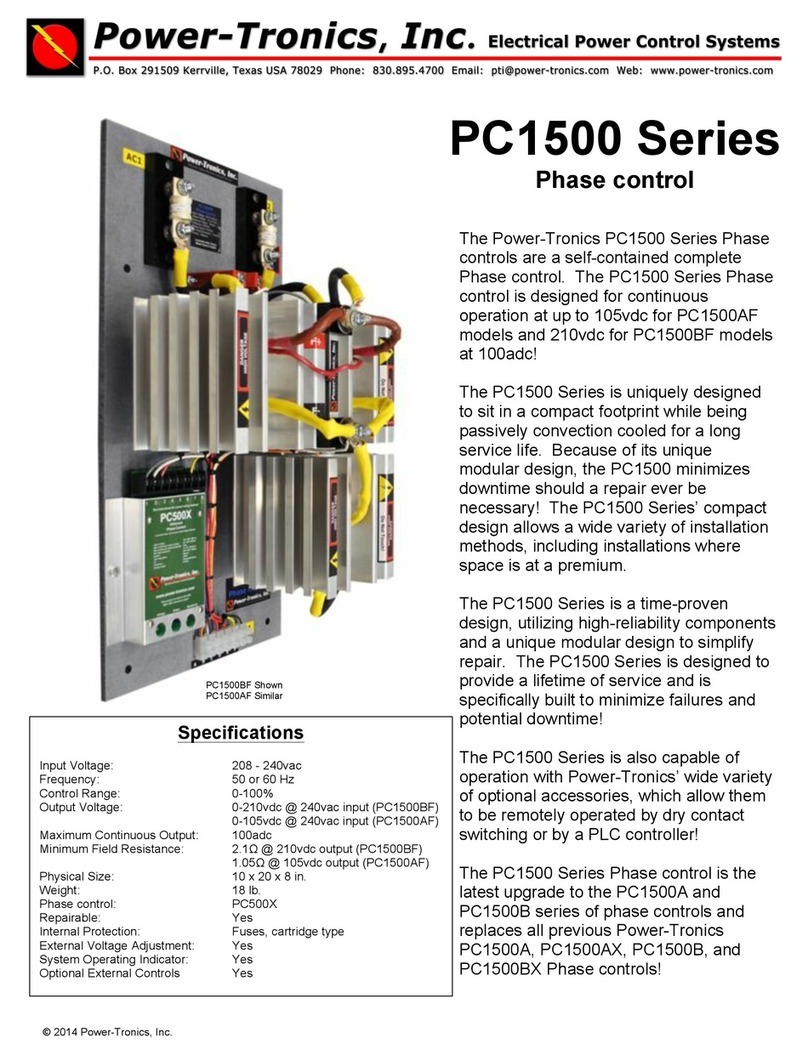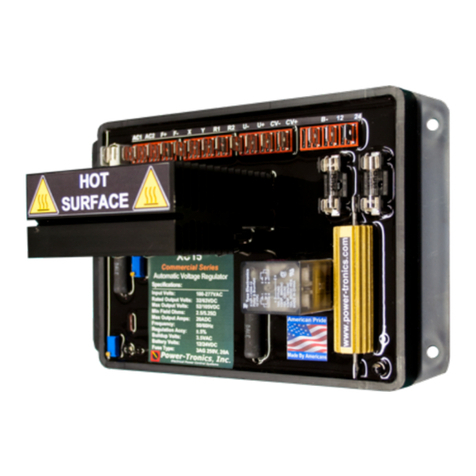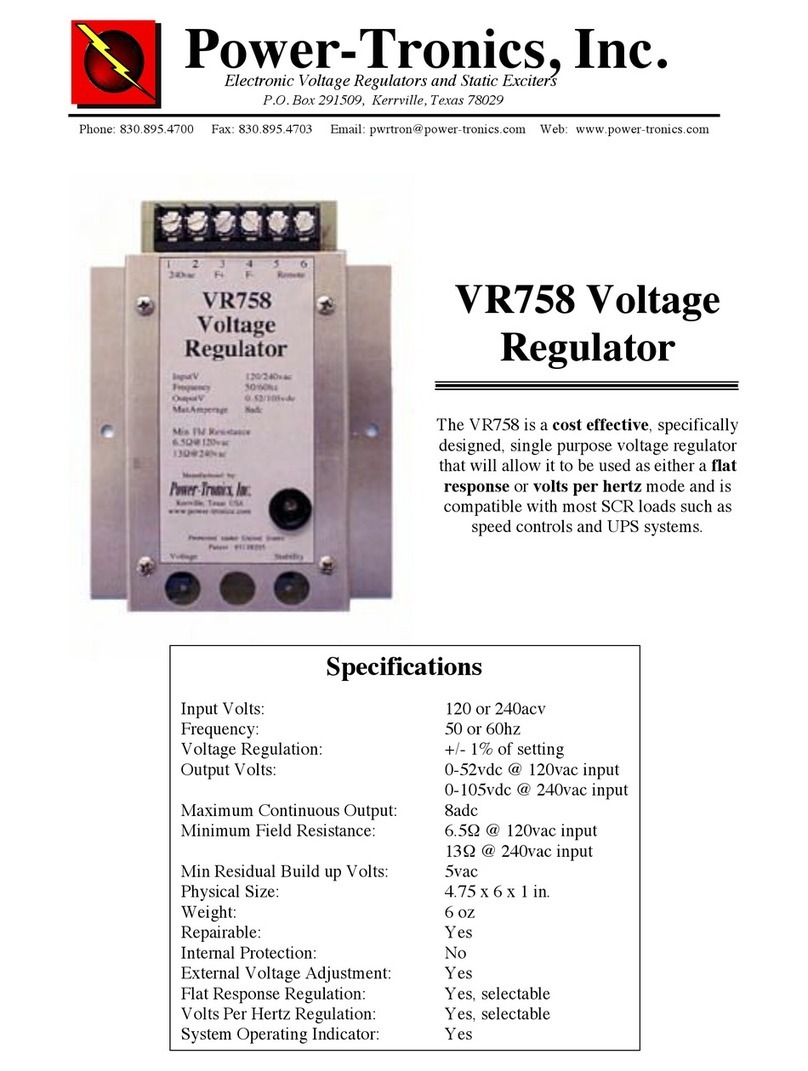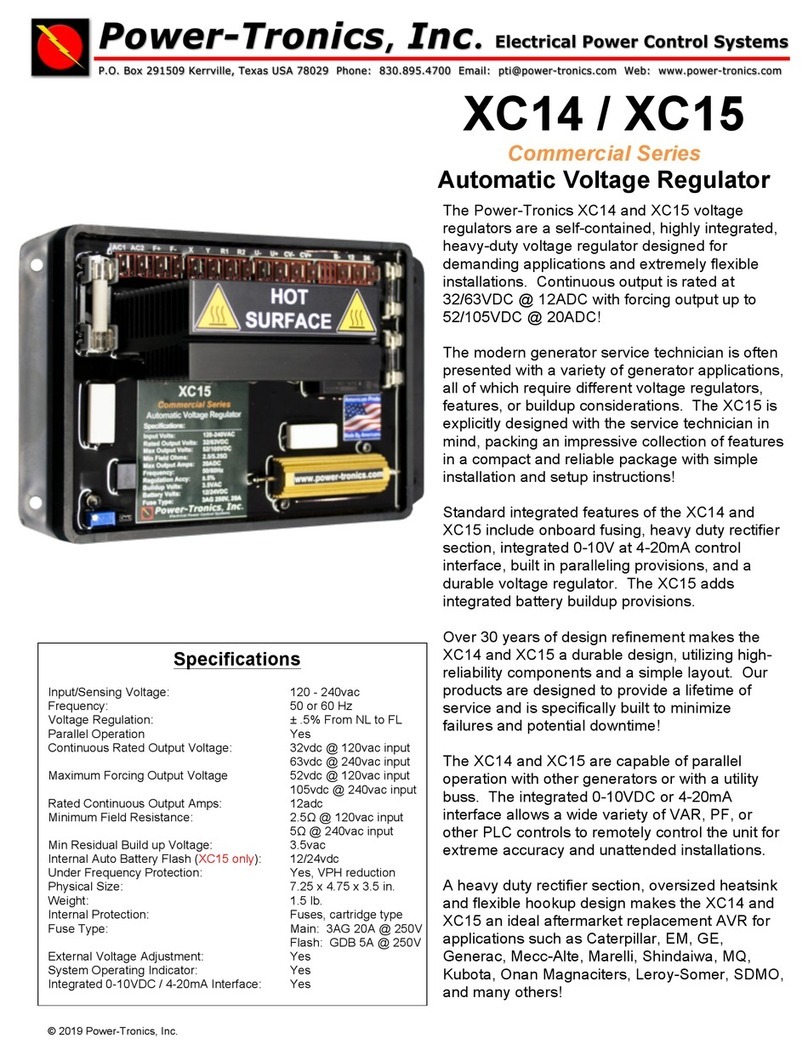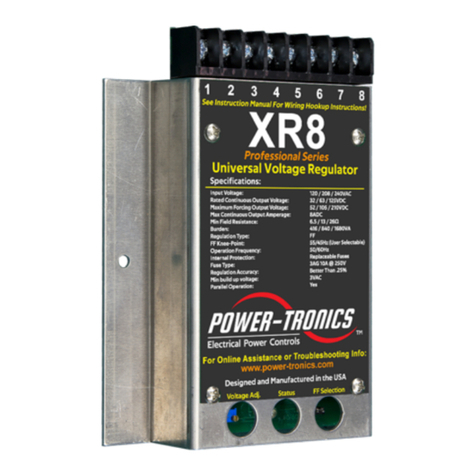
Visit our website at: www.power-tronics.com
Call Us at: (830) 895-4700
Introduction and Functional Description
Caution: Read This Installation
Manual Carefully and Entirely!
Warning: Do not use digital equipment to read voltage, Hz, or amperage
during this installation. Use only Analog sensing equipment! Failure to do so
may result in damage to equipment or in personal injury!
ALWAYS perform all setup procedures off-line
ALWAYS wear eye protection
ALWAYS strip wire insulation properly or use insulated connectors
ALWAYS use analog metering equipment when setting up the regulator
ALWAYS ensure the regulator receives ample airflow
NEVER hold the regulator in your hand when energized
NEVER install the regulator in a location it can get wet or is exposed to the elements
NEVER mount the regulator over a screw, bolt, rivet, welding seam, or other fastener
NEVER touch exposed components while the unit is in operation
NEVER insert a screwdriver or other object under the regulator cover
NEVER install a switch in the DC portion of the regulator’s wiring
NEVER USE A DIGITAL FREQUENCY METER (It can give a false reading!)
Functional Description
The XC4-R Automatic Voltage Regulator is the result of over 30 years of engineering efforts and offers high-
demand features at a competitive price point. The XC4-R is a proven design and is engineered to greatly
simplify setup while offering extreme reliability in demanding service conditions. When properly installed, the
XC4-R Automatic Voltage Regulator is designed to provide a lifetime of service.
A Generator voltage regulator has several automated tasks it must perform in order to provide reliable, clean,
and regulated electricity. It must build-up the generator, regulate the terminal voltage within its design
specifications, and protect both itself and the generator should a fault situation arise.
The XC4-R contains a time-proven, extremely reliable circuit for build-up functionality, in use for over 25 years.
Due to its simplicity, the XC4-R is able to build up generators with residual voltages from 3.5VAC without initial
overshoot or excessive delay. The patented circuitry contained in the XC4-R automatically adjusts the
regulator to match the generator’s response time, minimizing setup complexity while maximizing load
acceptance and rejection performance. The XC4-R is a precise voltage regulator and is capable of regulating
the terminal voltage of the generator within +/-.75% of its initial set point.
The XC4-R is a fully encapsulated design to resist extreme operating conditions. It also contains a unique idle
protection circuit, which helps to protect the generator rotor and exciter if the engine is idled with the regulator
still energized.
Due to its extreme simplicity, the XC4-R Automatic Voltage Regulator is uncommonly reliable and offers
features and regulation accuracy usually only offered by much more complicated and often much more
expensive regulators.

